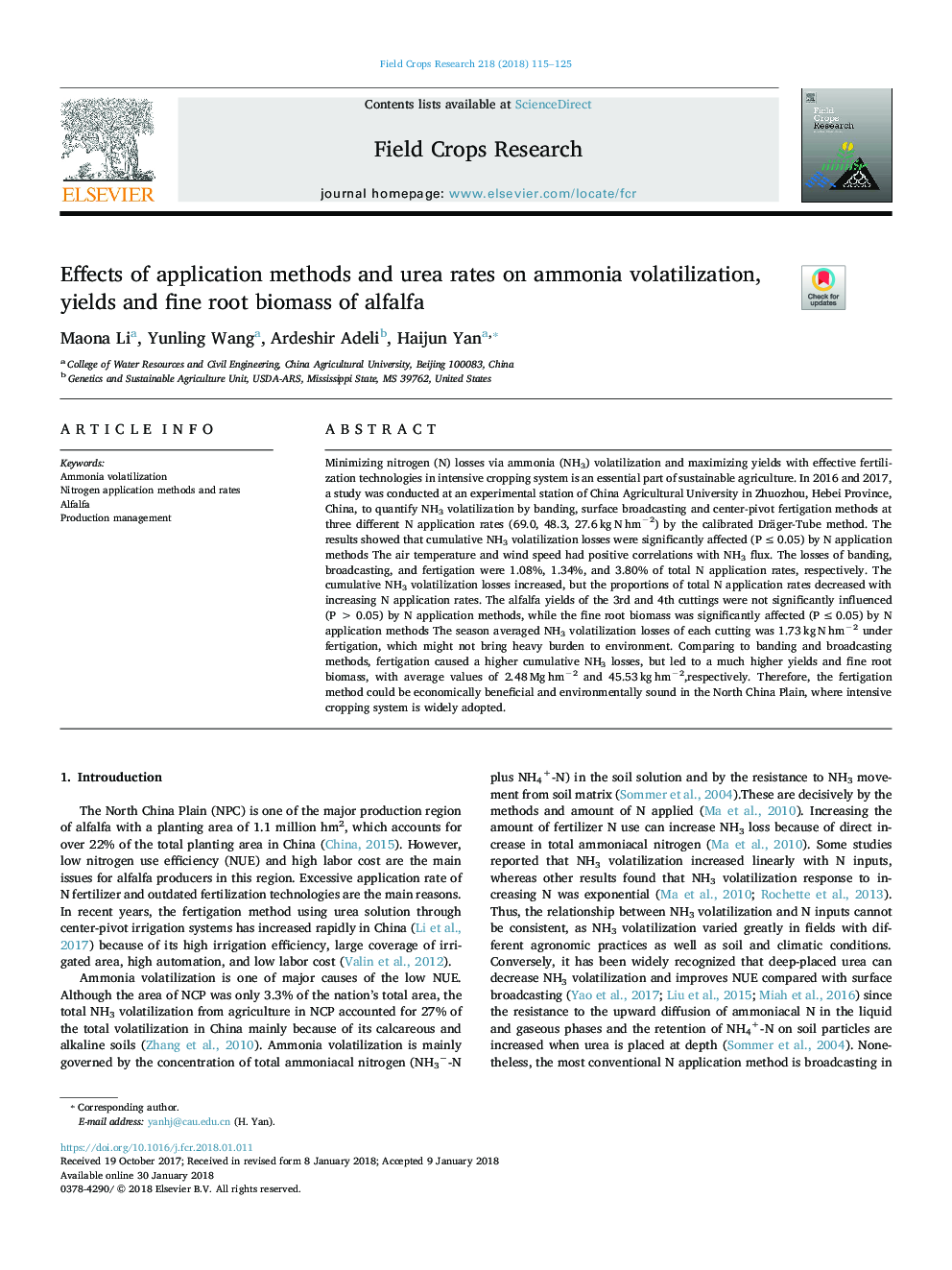| کد مقاله | کد نشریه | سال انتشار | مقاله انگلیسی | نسخه تمام متن |
|---|---|---|---|---|
| 8879360 | 1624645 | 2018 | 11 صفحه PDF | دانلود رایگان |
عنوان انگلیسی مقاله ISI
Effects of application methods and urea rates on ammonia volatilization, yields and fine root biomass of alfalfa
ترجمه فارسی عنوان
اثر روش های کاربردی و میزان اوره در فرآوری آمونیاک، عملکرد و ریشه زیست توده
دانلود مقاله + سفارش ترجمه
دانلود مقاله ISI انگلیسی
رایگان برای ایرانیان
کلمات کلیدی
فرآوری آمونیاک، روش های و میزان مصرف نیتروژن، یونجه مدیریت تولید،
موضوعات مرتبط
علوم زیستی و بیوفناوری
علوم کشاورزی و بیولوژیک
علوم زراعت و اصلاح نباتات
چکیده انگلیسی
Minimizing nitrogen (N) losses via ammonia (NH3) volatilization and maximizing yields with effective fertilization technologies in intensive cropping system is an essential part of sustainable agriculture. In 2016 and 2017, a study was conducted at an experimental station of China Agricultural University in Zhuozhou, Hebei Province, China, to quantify NH3 volatilization by banding, surface broadcasting and center-pivot fertigation methods at three different N application rates (69.0, 48.3, 27.6â¯kgâ¯Nâ¯hmâ2) by the calibrated Dräger-Tube method. The results showed that cumulative NH3 volatilization losses were significantly affected (Pâ¯â¤â¯0.05) by N application methods The air temperature and wind speed had positive correlations with NH3 flux. The losses of banding, broadcasting, and fertigation were 1.08%, 1.34%, and 3.80% of total N application rates, respectively. The cumulative NH3 volatilization losses increased, but the proportions of total N application rates decreased with increasing N application rates. The alfalfa yields of the 3rd and 4th cuttings were not significantly influenced (Pâ¯>â¯0.05) by N application methods, while the fine root biomass was significantly affected (Pâ¯â¤â¯0.05) by N application methods The season averaged NH3 volatilization losses of each cutting was 1.73â¯kgâ¯Nâ¯hmâ2 under fertigation, which might not bring heavy burden to environment. Comparing to banding and broadcasting methods, fertigation caused a higher cumulative NH3 losses, but led to a much higher yields and fine root biomass, with average values of 2.48â¯Mgâ¯hmâ2 and 45.53â¯kgâ¯hmâ2,respectively. Therefore, the fertigation method could be economically beneficial and environmentally sound in the North China Plain, where intensive cropping system is widely adopted.
ناشر
Database: Elsevier - ScienceDirect (ساینس دایرکت)
Journal: Field Crops Research - Volume 218, 1 April 2018, Pages 115-125
Journal: Field Crops Research - Volume 218, 1 April 2018, Pages 115-125
نویسندگان
Maona Li, Yunling Wang, Ardeshir Adeli, Haijun Yan,
